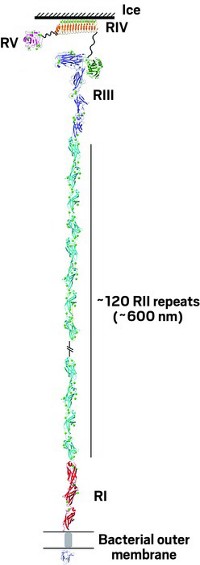Advertisement
Grab your lab coat. Let's get started
Welcome!
Welcome!
Create an account below to get 6 C&EN articles per month, receive newsletters and more - all free.
It seems this is your first time logging in online. Please enter the following information to continue.
As an ACS member you automatically get access to this site. All we need is few more details to create your reading experience.
Not you? Sign in with a different account.
Not you? Sign in with a different account.
ERROR 1
ERROR 1
ERROR 2
ERROR 2
ERROR 2
ERROR 2
ERROR 2
Password and Confirm password must match.
If you have an ACS member number, please enter it here so we can link this account to your membership. (optional)
ERROR 2
ACS values your privacy. By submitting your information, you are gaining access to C&EN and subscribing to our weekly newsletter. We use the information you provide to make your reading experience better, and we will never sell your data to third party members.
Biological Chemistry
Making ice microbe-style
Bacterial proteins found to seed ice formation above freezing temperatures by helping to arrange water molecules
by Sarah Everts
April 25, 2016
| A version of this story appeared in
Volume 94, Issue 17
The plant pathogen Pseudomonas syringae attacks its victims by seeding the formation of ice on leaves, even before temperatures fall below freezing. This ice formation bursts plant cells, giving the pathogen a route into its host. The bacterium’s skills are put to constructive use by ski resorts and desperate Winter Olympics hosts who use the microbe to help make snow. Although researchers know that the bacteria nucleate ice using proteins embedded in their membrane, not much is known about exactly how this occurs, in part because the 1,200-amino-acid proteins have not succumbed to X-ray crystallography and other structural biology characterization. A research team led by Tobias Weidner of the Max Planck Institute for Polymer Research now proposes that the bacterial proteins nucleate ice by controlling the order and dynamics of water molecules (Sci. Adv. 2016, DOI: 10.1126/sciadv.1501630). With computer simulations and sum frequency generation spectroscopy, an analytical method used to study surfaces and interfaces, the team showed that P. syringae proteins contain repeating hydrophilic and hydrophobic patterns that likely help arrange water molecules to enhance ice nucleation. They found the bacterial machinery can also remove heat from nearby water molecules, which can amplify the effect.





Join the conversation
Contact the reporter
Submit a Letter to the Editor for publication
Engage with us on Twitter